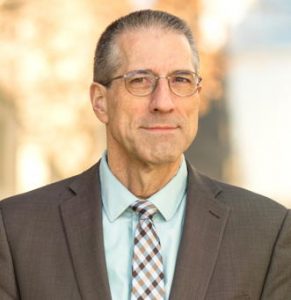WINNING TEAM: Nationally renowned arts program brings hope to children, families
There are many ways to save lives. Laura Shultz and her colleagues at Harmony Project KC are providing students from Kansas City’s northeast with life-affirming tools that build self-esteem through the sort of teamwork we normally associate with sports. But instead of footballs or baseball bats, they’re using violins, cellos, flutes, and clarinets.
“It’s more than music,” Laura said recently of the program, in which children from the ages of five to 18 receive five hours a week of professional-level music instruction free of charge. “Music is the vehicle. But we offer a place where you feel like you belong. … This is their ‘other’ life, away from school. … If they’re having struggles at school, when they come in here, it’s friendship with peers. Peers who love music.”
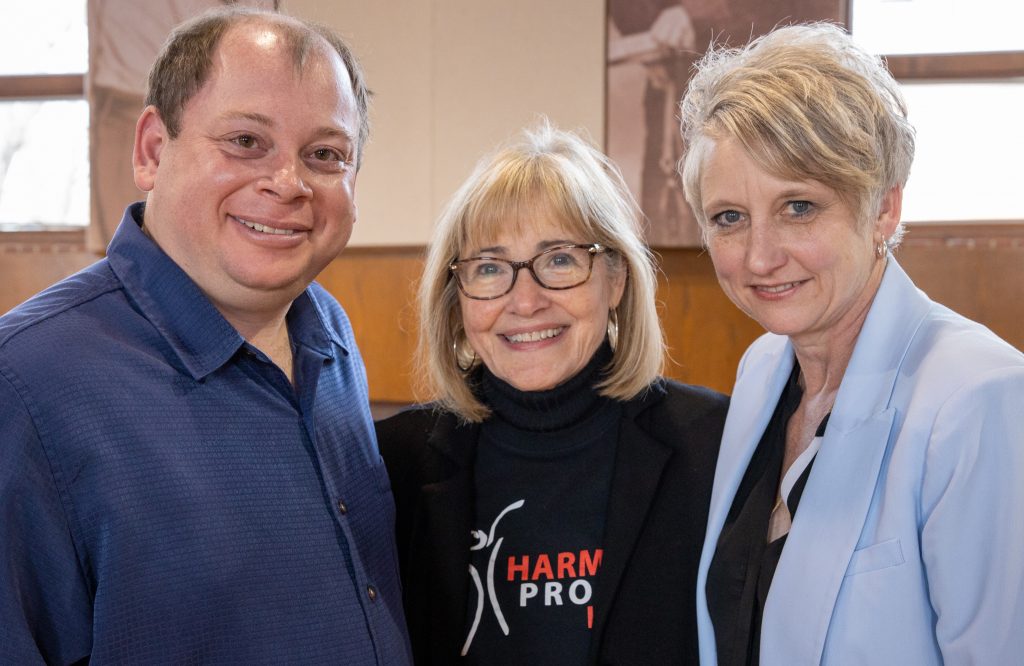
The Kansas City program, one of eight Harmony Projects nationwide, is transforming an area known for high crime and challenged schools. Since opening its doors in 2015, it has grown from 33 to 250 students, and it has repurposed the historic Northeast Community Center into a beehive of music and learning.
Moreover, in 2020 the Missouri Arts Council awarded Northeast Community Center’s executive director its top prize for Leadership in the Arts. “Harnessing the power of music,” wrote the Council, “Laura Shultz has transformed an empty community center in an underserved neighborhood into a haven of safety, learning, and joy for hundreds of children and their families.”

After two decades of immersing herself in Kansas City’s non-profit world, Laura knew she had found her niche when she discovered the work of Margaret Martin, who formed the first Harmony Project in 2001 in Los Angeles.
When President Barack Obama awarded Margaret the Presidential Citizens Medal in 2011, non profits around the country began to take notice. Laura travel to California to examine how the system worked, and she knew immediately she had found the right fit.
“Margaret said, you’ll be a great administrator,” said Laura, who initially had more administrative than musical experience. “She said, believe me, that is the reason a lot of non-profit startups fail: They don’t come with the administrative skills.”
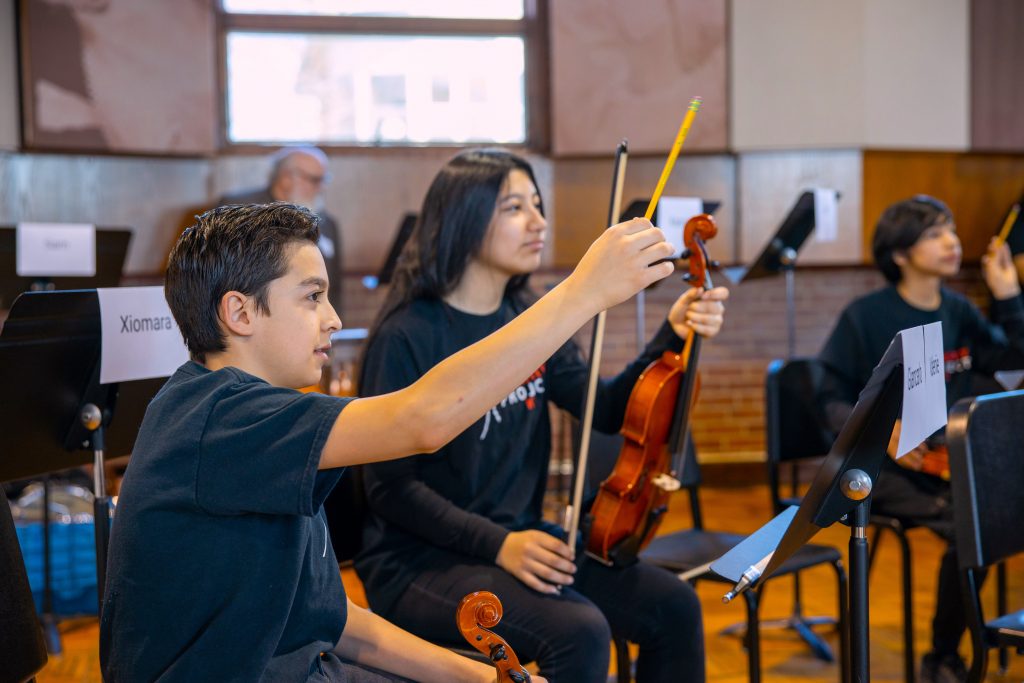
Laura also received encouragement from Michael Stern, who together with Margaret nominated her for the Arts Council award. “This is one of the most inspiring, important, and transformational things to happen to the musical, cultural, and educational landscape of Kansas City in a very long time,” said the Kansas City Symphony music director, a lifelong advocate of early music study, in a recent video interview.
“When we are talking about helping the next generation and finding the resources to do it, it becomes a struggle to try and figure out the logistics of that. Harmony Project KC is doing it. … There is no such thing as an undeserving student, but there are students who cannot afford to get what they deserve. This project brings music education at a very high level to some of the most underserved and deserving children in Kansas City.”
During a typical week, students spend two 90-minute sessions with one of the program’s 20 professional teaching artists, and on Saturdays they devote another two hours in ensemble and orchestral performance. (Much of this instruction has temporarily moved online because of COVID-19.) Every student receives a loaner instrument, along with meticulous instructions on how to care for it. “I was scared to death at first about that,” Laura said with a laugh. “But to this day I can tell you, we have not lost one instrument.”

Nearby public schools have taken notice: Harmony has been invited to start programs at Garfield Elementary and Wheatley Elementary, supplementing those schools’ existing music programs. “When we bring people from different backgrounds together, music unifies us in a special way,” said Selene Hernandez, a violin teaching artist whose brother, cellist Larry Hernandez, is also a Harmony teaching artist.
“It’s wonderful getting to see these kids go through the passages of growth together,” she added. “They’ve all struggled with learning to play their instruments, and now they’re gradually getting better together. And they’ve really become good friends.”
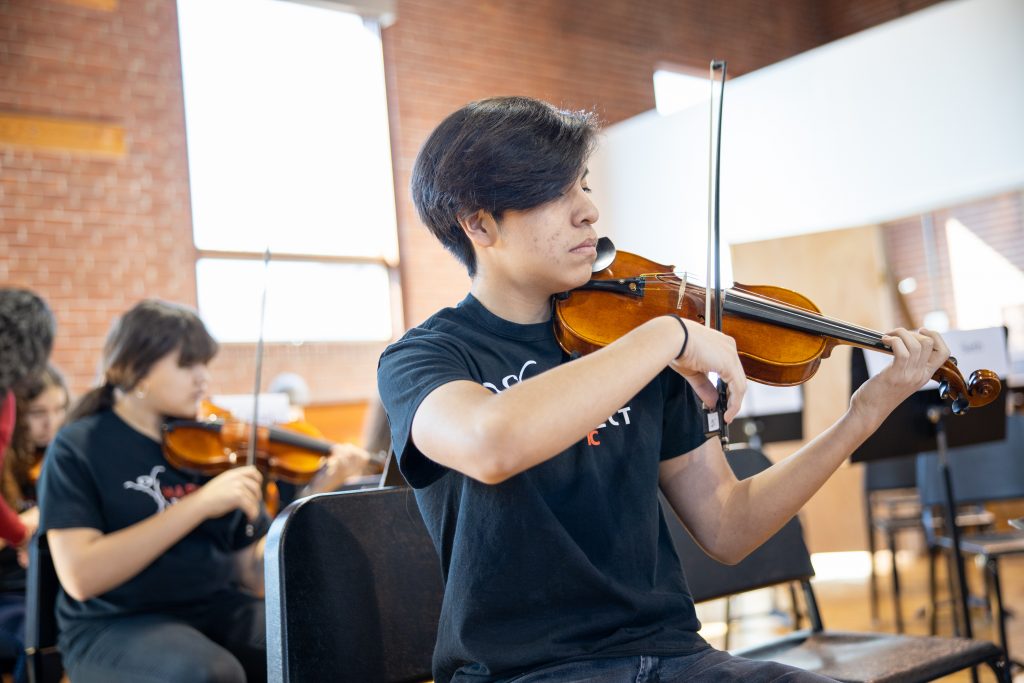
No doubt about it: This program is intense. “It’s a fairly big commitment for the kids and the families,” said violinist/violist Ashley Stanfield, a teaching artist who also plays in Kansas City’s Opus 76 Quartet. “We teach them five hours a week of instruction. They spend a lot of time there.” The students don’t mind. “They’re working side-by-side with their peers,” Laura said. And the pressure, when you’re with your friends, is that you don’t want to let them down. So learning to cooperate is an important part of the process.”
The results at Harmony Project KC have echoed national studies indicating that musical instruction enhances overall academic performance: Some 65 percent of the students at Harmony improve their grade average by an entire grade letter in a single year.
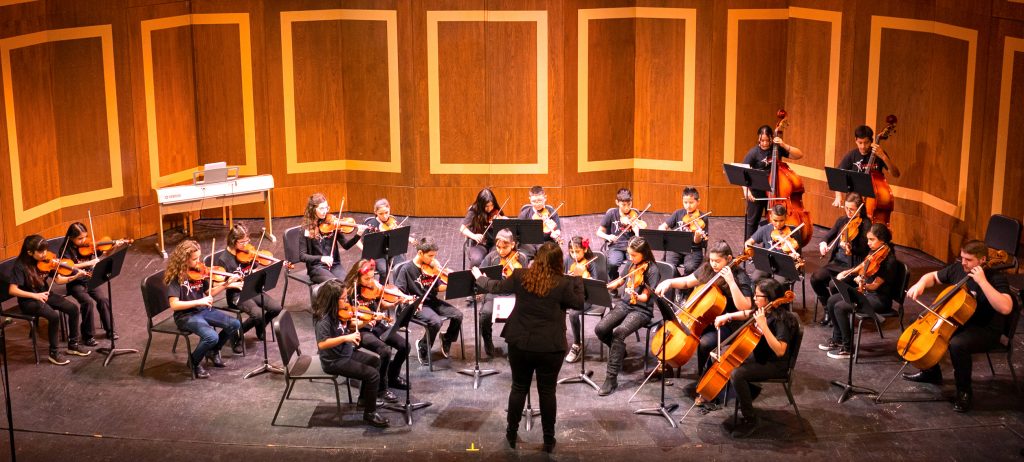
More and more science is backing up the notion that music aids the development of the young brain. “Kids come up to us after six months and say, I can’t believe I have this figured out now: I know how to do math,” Laura said. “I thought it would take us six or seven years to start seeing outcomes like that, but honestly it was happening within a semester.”
This does not just happen by itself: It requires constant vigilance on the part of the instructors, among whose roles is an annual evaluation of each student. “We’re looking at things like, are they contributing to class, are they prepared, and bringing their materials?” Ashley said. “Are they respectfully solving problems with other kids? Are they able to exhibit self-control appropriate to their age level? Are they able to be resilient and overcome an obstacle, and have a positive attitude about it?”
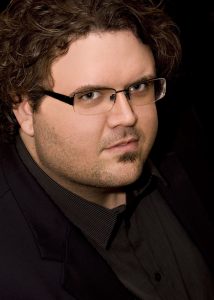
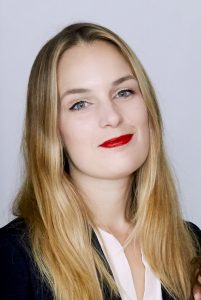
The data speaks for itself. “Students who study music have a higher brain function,” said Cellist Jesse Henkensiefken, program manager since January 2020, who holds a master’s from the Manhattan School of Music and a doctor of musical arts degree from the University of Kansas. “They test better and tend to be more productive in their non-music classes.”
Studies have indeed shown that actually making music activates several areas of the brain at once. “It’s not just pat your head and rub your tummy,” Jesse said. “It’s pat your head, rub your tummy, tie your shoe, chew gum, and breathe at the same time.”
The students love the challenge.“The most important lesson it’s taught me is to be focused,” said 14-year-old cellist Benjamin, a five-year veteran of the program. “To discipline myself, to care more, to be more responsible for myself. And to appreciate what I have at Harmony.”
Whatever else music might do, it taps into us in ways we only partly understand. “The great genius of music, and of bringing music to even very young children, is that it gives them a voice,” Michael said. “It gives them a way to show others that their voice matters. And it’s a voice that they cannot lose their entire lives: No one can take it away from them. They know that with that voice, they will be heard in the world. What a gift to these children: what a gift to all of us, to know that music can have this impact..”
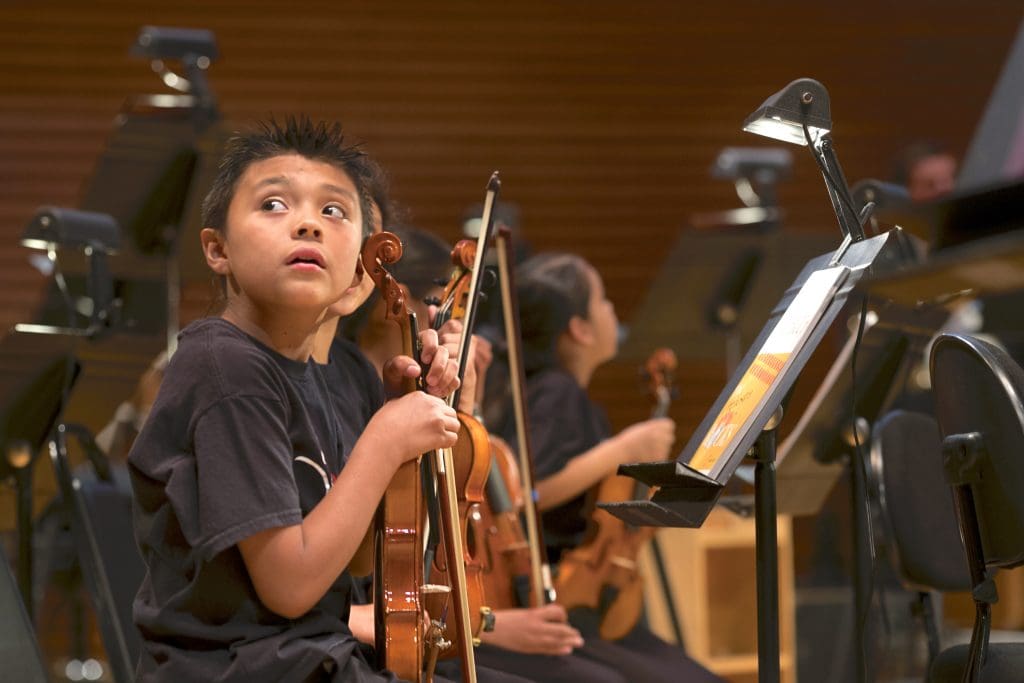
Plans for expansion are never far off, Jesse said. “We did extraordinarily well during the COVID-19 pandemic. However, once we are back to in-person instruction, I intend to expand our string sections, start diversifying our wind options, and create a schoolwide piano program.”
To maintain standards at Harmony Project KC, and to keep the tuition at zero, fund-raising is an essential and ongoing process: under the guidance of Board President David Collier (in-house counsel at H&R Block) and Vice-President Michael Gordon (Kansas City Symphony principal flutist).
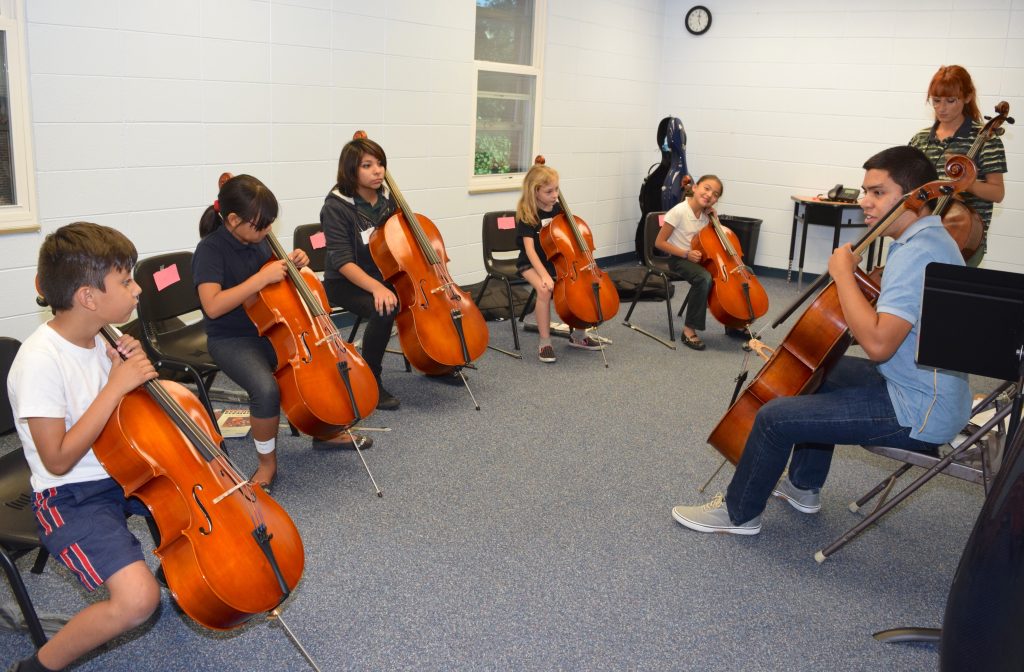
“No student pays anything,” Laura said. “At one point, Los Angeles was saying that it costs $1,500 per child per year to do this, but it depends on the child: Each is different. It’s probably closer to $2,000. … If someone wants to support a child for a year, this would do a good job toward that.”
—By Paul Horsley
For more information about the project, go to harmonyprojectkc.org.
Cover photo: Laura Shultz, executive director of the Northeast Community Center, posed with Arely, Kyara, Lizbeth, and Joselyne, members of the Harmony Project KC string section, at a Paseo Academy concert in the fall of 2019. / Photo by Roger Ridpath.
To reach Paul Horsley, performing arts editor; send an email to paul@kcindependent.com or find him on Facebook (paul.horsley.501) or Twitter (@phorsleycritic).


